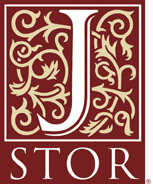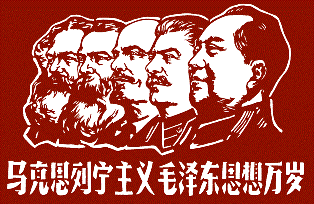
Mao Tse-tung's China
Mao Tse-Tung (or Maozedung) was the leader of Communist China from 1949 until his death in 1976. He adapted Marx to the rural, pre-industrial Chinese economy and society. His success meant this became the template for the vast majority of socialist revolutions across the developing world in the second half of the 20th century. Although successful in reinventing China following over a century of humiliation and exploitation, was it worth the tens of millions of lives lost in the Great Leap Forward + Cultural Revolution?
http://news.bbc.co.uk/hi/english/static/special_report/1999/09/99/china_50/mao.htm
Click above for a timeline of Mao
Authoritarian State Checklist
Emergence of authoritarian states
-
Conditions in which authoritarian states emerged: economic factors; social division; war; weakness of political system
-
Methods used to establish authoritarian states: persuasion + coercion; role of leaders; ideology; the use of force; propaganda
Consolidation and maintenance of power
-
Use of legal methods; use of force; charismatic leadership; dissemination of propaganda
-
Nature, extent and treatment of opposition
-
The impact of the success and/or failure of foreign policy on the maintenance of power
Aims and results of policies
-
Aims and impact of domestic economic, political, cultural and social policies
-
The impact of policies on women and minorities
-
Authoritarian control and the extent to which it was achieved
China :A Century of Revolution 1949-76
Click on the left hand icon to access a comprehensive documentary on the succession of Mao to power in 1949 and what he did once that power was assured.
- early reforms
- Great Leap forward
- Cultural Revolution
- relations with USSR + USA
Mao's rise to power
So how did Mao rise to power? The background are the events of the Chinese Civil War just covered. However, how did Mao adjust the Eurocentric bias of Marx to the demands of E Asia + beyond?
Why did it work?
Why is China still under the control of the 'Communist Party' in 21stC China?
Use Maoism PP on right for answers...
Maoism PP

Mao was born on 26 December 1893 into a peasant family in Shaoshan, in Hunan province, central China. After training as a teacher, he travelled to Beijing where he worked in the University Library. It was during this time that he began to read Marxist literature. In 1921, he became a founder member of the Chinese Communist Party (CCP) and set up a branch in Hunan. In 1923, the Kuomintang (KMT) nationalist party had allied with the CCP to defeat the warlords who controlled much of northern China. Then in 1927, the KMT leader Chiang Kai-shek launched an anti-communist purge.
Mao and other communists retreated to south east China. In 1934, after the KMT surrounded them, Mao led his followers on the 'Long March', a 6,000 mile journey to northwest China to establish a new base.
The Communists and KMT were again temporarily allied during eight years of war with Japan (1937-1945), but shortly after the end of World War Two, civil war broke out between them. The Communists were victorious, and on 1 October 1949 Mao proclaimed the founding of the People's Republic of China (PRC). Chiang Kai-shek fled to the island of Taiwan.
- use the reading and Powerpoint on the left to construct a timeline of key events within Maos's rise to power explaining where he came from and how he rose...
- which decisions helped him?; which conditions helped him?...
When assessing RTP questions in P2, we structure our answers around the methods v conditions dynamic. Within this we often come across 'propaganda' as a method commonly used by authoritarian leaders, but it can often prove a false friend. Why? It is very difficult to say for sure whether the speeches, media output etc.. was actually believed by the population at large or whether they just paid lip service to these ideas.
One way we can try to make more solid claims about the role propaganda plays is by assessing the techniques used in propaganda and how they work. By using your understanding of these techniques based around your Political speeches unit in English, it is possible for you to identify techniques used and assess their effectiveness....
Access the speeches by Mao on the right + assess their impact......



TOK - When considering the value of knowledge in history, we often need to consider the language used.
- TWE does language determine historical interpretation?
aims + results of policy
Mao and other Communist leaders set out to reshape Chinese society. Industry came under state ownership and China's farmers began to be organised into collectives. All opposition was ruthlessly suppressed. The Chinese initially received significant help from the Soviet Union, but relations soon began to cool.
In 1958, in an attempt to introduce a more 'Chinese' form of communism, Mao launched the 'Great Leap Forward'. This aimed at mass mobilisation of labour to improve agricultural and industrial production. The result, instead, was a massive decline in agricultural output, which, together with poor harvests, led to famine and the deaths of millions. The policy was abandoned and Mao's position weakened.
In an attempt to re-assert his authority, Mao launched the 'Cultural Revolution' in 1966, aiming to purge the country of 'impure' elements and revive the revolutionary spirit. One-and-a-half million people died and much of the country's cultural heritage was destroyed. In September 1967, with many cities on the verge of anarchy, Mao sent in the army to restore order.
Mao appeared victorious, but his health was deteriorating. His later years saw attempts to build bridges with the United States, Japan and Europe. In 1972, US President Richard Nixon visited China and met Mao. Mao died 9 September 1976
The key developments in Maoist domestic policy have both long been associated with failure of Mao to live up to the early promise of his early reforms which swept away centuries of gender oppression and economic exploitation. Both the Great Leap Forward and the Cultural Revolution undoubtedly caused huge social suffering with incalculable loss, but was this necessarily inconsistent with Maoist ideology overall?
Was Mao's utopia ever supposed to be realised? Was this a position that his adaptation of Marx could ever really allow? Does this reveal a fundamental flaw within this ideological stance, or merely consolidate its effectiveness..?
- review Maoism by revisiting the Powerpoint above - how did Mao adapt Eurocentric Marxism to rural China?
- using these ideological tenets, or main ideas, research the GLF + Cultural Revolution using the resources below...
Mao in power I (left)
- early reforms + the advent of the Great Leap Forward
Mao in power II (r)
- fall and revival in Mao's position afetr the GLF into the CR
I) How ideologically consistent was the Great Leap Forward?
'Mao's Great Famine' was the first historical work to focus on the full impact of the GLF campaign of 1958-62 which had unprecedented access to local Chinese archive material. Dikotter attempts to both illustrate the effect that central state planning can have on the population whilst bringing home the active participation of that population in the process itself.... Using your reading and the preface, assess how consistent the policies of the GLF were with Maoism as a whole + complete the googledoc on the right...
Interview with Dikotter and rebuttal of his research by another historian
-
Read the interview with Dikotter (l) + watch the video below - how does he see Mao?
-
Use the historian summary at foot of page. Sum up his views on history
-
Read both the rebuttal, or criticism, of his work and how he replies to it (on the left)
...always OPCVL your source! (Extra critique attached to video below - btm right)
- What value does Dikotter's work provide for the historian studying the GLF?
- What limitations does his work provide for the historian studying the GLF?
- Crucially, come to a judgement - do you value his work or not? Explain your answer...
II) How ideologically consistent was the Cultural Revolution?
Frank Dikotter again summarises his research into the rule of Mao Tse-Tung by examining the subject of his third publication, the Cultural Revolution 1962-76.
Watch and collect notes on his dissection of events into four distinct sections
- Why was the Cultural Revolution launched?
(Khrushchev's DeStalinisation; Mao vs USSR I -
GLF; Mao under attack + Mao vs USSR II - CR)
- 1962-66 - Early Years + socialist education
- 1966-68 - Red Years + anti est violence
- 1968-71 - Black Years + military garrison state
- 1971-76 - Grey Years + realisation about CR
Professor Daniel Breen explains with excellent detail why the Cultural Revolution emerged, what it hoped to achieve, how it was organised, what it actually achieved and of course how ideologically consistent it was with the tenets of Maoism.
Watch the lecture and use the attached Word document to note down some of the excellent detail that Dr Breen uses in his lecture notes to help with your P2 essay writing....

.png)









